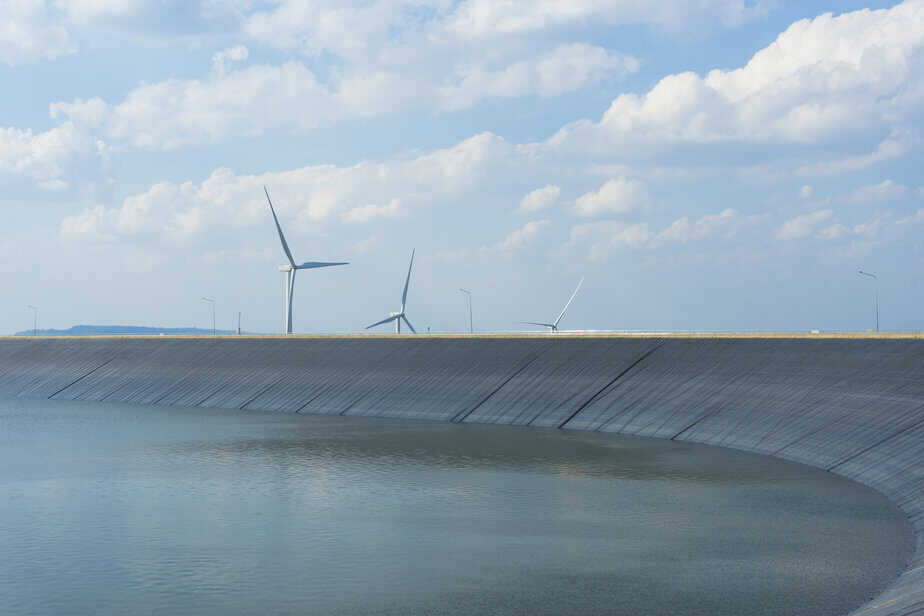
While liners for dams are sometimes viewed as a solution to seepage and environmental concerns, they come with a host of disadvantages and challenges.
- Ecological Impact
- Increased Costs
- Limited Lifespan
- Engineering Challenges
- Incompatibility with Natural Ground Conditions
- Environmental Permits and Regulations
Dams have been a critical part of human infrastructure for centuries, serving various purposes such as water storage, flood control, and hydroelectric power generation. While dams have undeniable benefits, they also come with their fair share of environmental and engineering challenges. One controversial aspect of dam construction is the use of liners, which are often intended to prevent seepage and enhance the dam’s overall performance. In this blog post, we will explore why liners for dams can be a bad idea, focusing on the potential drawbacks and their implications.
Ecological Impact
One of the primary concerns associated with liners in dams is their ecological impact. Dams can alter local ecosystems significantly, and the addition of liners can exacerbate these effects. Liners create impermeable barriers that can disrupt natural water flow and the movement of aquatic organisms. This disruption can have devastating consequences for fish migration, sediment transport, and the overall health of aquatic ecosystems.
For instance, fish species like salmon rely on free-flowing rivers to complete their life cycles. Liners can impede their upstream migration and reduce their ability to spawn successfully. Moreover, liners disrupt the natural transport of sediments downstream, which can have cascading effects on the health of riverbeds and estuaries.
Increased Costs
Another reason why liners for dams can be a bad idea is the significant increase in construction and maintenance costs. Building a liner for a dam requires the use of specialized materials, often including clay, concrete, or geomembranes, which can be expensive. Additionally, the installation of liners requires skilled labor and advanced engineering techniques, further adding to the cost.
Furthermore, the ongoing maintenance of liners can be a financial burden. Over time, liners may deteriorate, puncture, or require repairs. These maintenance activities demand resources and can disrupt the dam’s normal operation, potentially causing downtime and revenue loss, particularly in hydroelectric dams.
Limited Lifespan
Liners, like any other man-made infrastructure, have a limited lifespan. Depending on the materials used and the quality of installation, liners may deteriorate over time due to various factors such as temperature changes, chemical exposure, and physical wear and tear. When liners fail, they can compromise the integrity of the dam and pose significant risks to downstream communities and ecosystems.
Engineering Challenges
Constructing and maintaining liners for dams pose engineering challenges that can lead to unforeseen complications. Ensuring a secure and reliable seal between the liner and the dam structure is critical, and any lapses in this process can result in seepage or leakage. The difficulty in achieving a perfect seal is one of the reasons why liners can be risky.
Additionally, liners may not adapt well to the dynamic conditions of dam operation. Dams are subject to water level fluctuations, seismic activity, and other environmental factors that can cause liners to shift or crack. These issues can lead to costly repairs and potentially catastrophic failures.
Incompatibility with Natural Ground Conditions
The effectiveness of liners for dams is highly dependent on the surrounding ground conditions. In some cases, the natural geology and soil composition may not be compatible with liners. For example, if the underlying soil is highly permeable, such as sand or gravel, liners may not provide the desired level of seepage control. In such cases, investing in liners can be a futile effort, as the dam will still experience significant seepage and leakage.
Environmental Permits and Regulations
The use of liners in dam construction often requires environmental permits and compliance with strict regulations. These regulatory processes can be time-consuming and costly, leading to delays in dam construction. Moreover, environmental agencies may impose additional requirements to mitigate the ecological impact of liners, further increasing the overall project cost.
Alternatives to Liners
Instead of relying on liners, there are alternative strategies for managing seepage and ensuring dam safety. These approaches often focus on enhancing the natural environment and implementing sustainable engineering practices. Some alternatives include:
a. Sloping the dam sides: Creating gentler slopes on the sides of the dam can reduce the pressure on the dam structure and minimize the risk of seepage.
b. Installing cutoff walls: Cutoff walls made of impermeable materials can be constructed within the dam to control seepage without the need for liners.
c. Implementing vegetation and erosion control measures: Promoting the growth of native vegetation and implementing erosion control techniques can help stabilize the dam’s surface and reduce seepage.
d. Regular maintenance and monitoring: Proper maintenance and monitoring of dam infrastructure can detect seepage issues early and prevent more extensive problems.
Conclusion
While liners for dams are sometimes viewed as a solution to seepage and environmental concerns, they come with a host of disadvantages and challenges. The ecological impact, increased costs, limited lifespan, engineering challenges, incompatibility with natural ground conditions, and regulatory hurdles make liners a questionable choice for dam construction. It is crucial to consider alternative approaches that prioritize both dam safety and environmental sustainability. By exploring these alternatives and taking a more holistic approach to dam construction and maintenance, we can strike a balance between meeting human needs and preserving the natural world.
More reading
Why Polymer Sealers Are Not The Solution To A Leaking Dam
